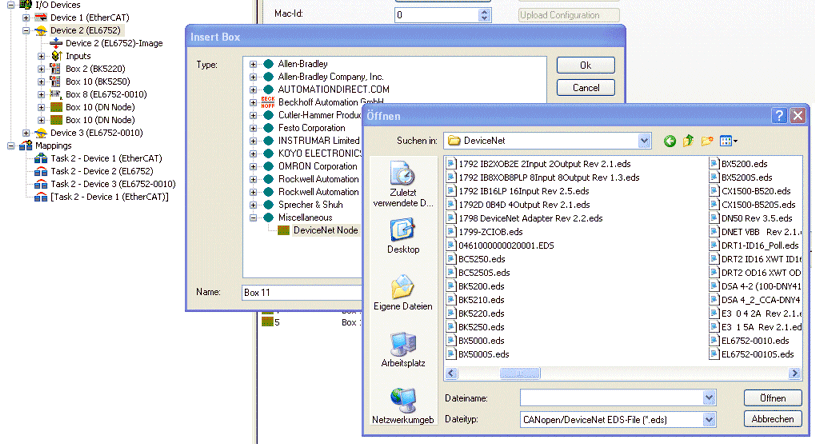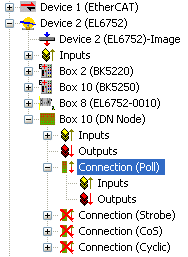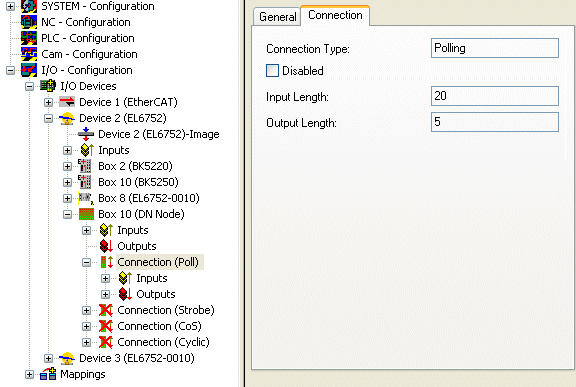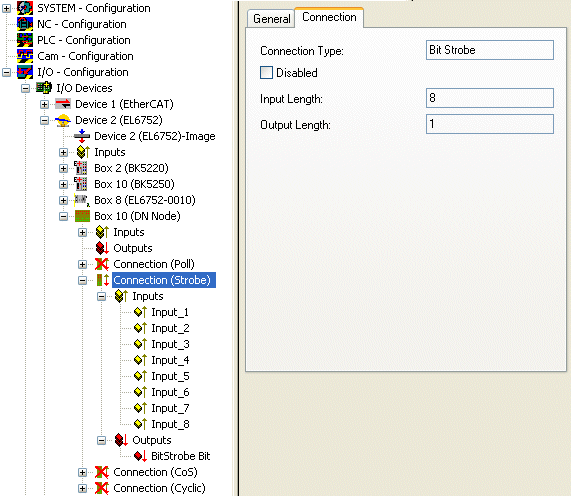Integrating a DeviceNet device without EDS file
A DeviceNet device without EDS file can be integrated via the "Miscellaneous" option:

Terminate EDS file selection with "Cancel". A general DeviceNet device is created.
Selection of the IO mode and the general configuration must then be carried out manually.
DeviceNet IO modes
For DeviceNet devices the EL6752 supports the DeviceNet modes cyclic polling, change of state / cyclic and bit strobe. The IO modes can be selected according to the DeviceNet specification.
The DeviceNet IO mode cyclic polling is the default selection for the EL6752:
|
IO mode |
Input data length / bytes |
Output data length / bytes |
|---|---|---|
|
Polling |
0 - 255 |
0 - 255 |
|
Change of State |
0 - 255 |
0 - 255 |
|
Cyclic |
0 - 255 |
0 - 255 |
|
Bit strobe |
1 bit |
0-8 |
|
Total of all IO data |
max. xxx bytes |
max. xxx bytes |
polling / change of state (COS) / cyclic
The cyclic polling mode is characterized by cyclic polling of the IO data by the master. The change of state mode is characterized by event-oriented sending of IO data. In cyclic mode the IO data are sent cyclically based on the communication parameters configured by the master. The settings are identical for these modes.
The input and output data lengths must be supplemented according to the device configuration:

Input or output data must be appended depending on the device configuration. Any data type can be selected:

The data length is converted to a byte stream according to the DeviceNet specification and displayed in the tab for the corresponding connection:

 | Maximum data length The maximum data length per data direction is 255 bytes. |
Bit strobe
The IO mode bit strobe involves an 8-byte command from the master to the slaves. For each possible address/MAC ID (DeviceNet address space: 64) 1 bit of user data is allocated. The maximum length of the response message from the slave is 8 bytes. It is sent to the master immediately when the bit strobe command is received.
After selection of the bit strobe mode the input data must be configured accordingly. Any data type can be selected (see polling/ COS / cyclic). The data length is converted to a byte stream according to the DeviceNet specification and displayed in the tab for the bit strobe connection:

 | Maximum data length The maximum input data length is 8 bytes. The output data length is fixed. |
Since the communication settings are specified through the master no further settings are possible.